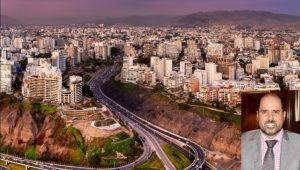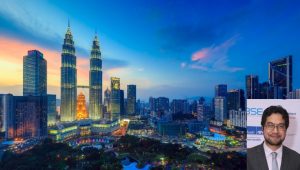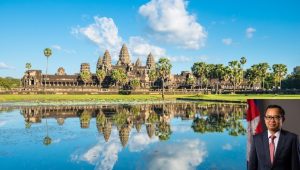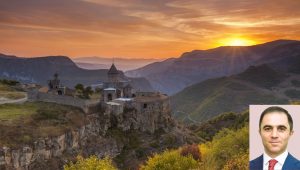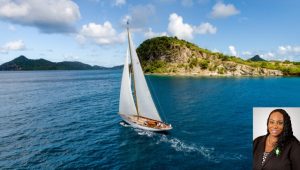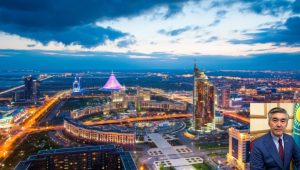THE KINGDOM OF LIGHT
Located in the North West of Africa, the Kingdom of Morocco covers an area of 710,850 square kilometers along with over 3,500 km coastline overlooking the Atlantic Ocean in the west and the Mediterranean in the north. Landscape diversity, local colour, and artistic heritage make the country a mosaic of distinctive cultural regional features
By His Excellency Mr. Abderrahim Rahhaly, Ambassador of His Majesty the King of Morocco to the Kingdom of Thailand
A Land of Diversity, Morocco enjoys a wide range of architecture with traditional tile work available in such long-standing historical cities as Fez, Meknes, Salé, Rabat and others. Despite its modern transformation, Morocco has never lost sight of its deep-rooted traditions. The magical Medina (old city) is a testimony of the traditional Moroccan heritage embedded in people’s daily life. Cities such as Rabat, Fez, Tetouan, Essaouira and Marrakech, have been registered as World Heritage by UNESCO.
TOURISM ATTRACTIONS
Tourists travelling to Morocco can enjoy a wide range of historical monuments such as the outstanding Mausoleum of Mohammed V built opposite to the remarkable Hassan Tower that dates back to many centuries. Standing in Casablanca, Hassan II Mosque is the largest worshiping facility in Africa, half of which is built on sea water over the Atlantic Ocean.
Throughout monuments such as Volubilis (Roman city), Lixus and Chellah, the visitor will experience moments of ancient history of long-lived civilisations with different cultural influences. UNESCO has listed Volubilis and Chellah archeological sites as World Heritage.
Morocco also has a tremendous geographic variety of mountains, beaches, desert and sand dunes. Thanks to its situation in the Mediterranean and the Atlantic Ocean, Morocco enjoys mild weather in the West and a fairly warm climate southward. The Atlas chain of mountains offers rainy and snowing seasons.
Deep in the South, the city of Dakhla offers an overwhelming combination of golden sand dunes and a magnificent beach that surfers from all over the world visit to practice kite surfing. Nowadays, the city is hosting kite-surfing contests and World Cup Championships.
Merzouga city is known worldwide for its Sahara landscape where tourists can experience a magically unique sunrise in the desert.
A LAND OF CULTURE AND ART
The Moroccan identity encompasses a broad spectrum of blended cultural backgrounds of Arab, Berber and Saharan-Hassanic components, nourished and enriched by African, Andalusian, Hebraic and Mediterranean hallmarks.
The Kingdom is home to vivid culture and traditions. Many Moroccan cultural celebrations take place in different regions in Morocco, such as Tan-Tan festival, which is an annual gathering of people. During the festival, people from many areas come together to socialise and enjoy local music (Guedra), local dancing choreography (Ragues) and Camel race. UNESCO listed the Tan-Tan Festival as an Oral and Intangible Heritage of Humanity in 2005, and it was placed on the Representative List of Intangible Cultural Heritage of Humanity in 2008.
The amazing Cherry Festival is celebrated each year in Sefrou, a town close to the city of Fez, to appreciate the natural glamour of Sefrou, where the Moroccan “Cherry Queen/beauty pageant” is selected among many young ladies of the region. Sefrou is known for its cherry fruit grown by local farmers.
The Marrakech International Film Festival is one of the outstanding cinematographic and cultural events that take place in the city of Marrakech. The film festival welcomes and pays tribute to national and international movie stars and actors who made great artistic performances during their career. The festival jury also gives a special recognition to young movie directors for their short films.
Traditional craftsmanship and design are one of the deep-rooted cultural heritages of the Kingdom of Morocco. Multiple materials are finely hand woven using traditional tools and techniques to make decorative commodities such as table, furniture, jewellery and clothing. Rabat, Fez and Tetouan are some of the cities that offer a wide range of Moroccan handicrafts, including rugs and carpets for different purposes.
Morocco is known for its authentic farming products such as argan oil, saffron, the prickly pear, rosewater and orange blossom water. UNESCO in 2014 listed the Moroccan know how relevant to the Argan tree as Intangible Cultural Heritage.
As to gastronomy, Moroccan cuisine is diverse with its wide range of flavours and ingredients cumulated over centuries as an outcome of longstanding culinary inputs of many civilisations that lived in Morocco. Many of these dishes are known worldwide. In 2020, the UNESCO listed “Moroccan Couscous” dish on its Intangible Cultural Heritage list in recognition of the know-how and the peculiar recipe.
A PROMISING TOURISM DESTINATION
Morocco is one of the leading destinations for international tourists travelling to Africa. It ranks among the top three most visited countries in the continent thanks to its natural assets, and increasingly modern air connectivity, road and sea transport network.
Being a crossroad between Africa and Europe, Morocco offers tourism opportunities to travellers coming from Europe using less than three hours’ flights. The “Open Sky” agreement signed in 2005 between the Kingdom of Morocco and the European Union helped further enhance the tourist area and national economy.
In its policy aimed at facilitating access to the Kingdom of Morocco, online electronic visa (e-Visa) has been granted since July 2022 to tourists and businessmen wishing to visit the country, including Thai citizens who can apply online using the application platform (www.accès-maroc.ma).
In its efforts to promote tourism, the Government has adopted a policy through four main programmes: Seaside Tourism – Azur 2020, Cultural Tourism, Sustainable Tourism, and National Tourism. Azur 2020 aims at enhancing beaches and building additional entertainment environment friendly facilities.
Cultural Tourism focuses on highlighting the Kingdom’s tangible and intangible heritage.
Through Sustainable Tourism, the Government is investing in tourist infrastructure that ensures developing the national economy but accommodating environment protection. To this purpose, Morocco aims at developing the first “carbon free” tourist destination in Africa. As to National Tourism, Moroccan citizens are offered encouraging hotel rates and incentives to make them enjoy stays in many regions during national holidays and events.








